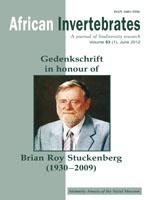This paper presents the results of investigations conducted between 2011 and 2013 to discover additional populations of Mormotomyia hirsuta Austen. These investigations were conducted primarily in the relatively dry savanna of eastern Kenya, focusing on small hills and rocky outcrops resembling that of Ukasi Hill, the type locality of the “terrible hairy fly”. Investigations were conducted at 144 caves and at ground level, directly below 104 above-ground, narrow, horizontally-oriented fissures, often on near-vertical rock faces. Evidence of Mormotomyia was not found in any of the caves investigated. During the dry season, however, desiccated corpses of Mormotomyia were discovered embedded in a matrix of dried bat guano adhering to the rock face directly below fissures at Ngauluka and Makilu Hills, also located in the Ukasi area. Later, rainy season visits to these two hills revealed populations of living Mormotomyia while, contemporaneously, flies were absent from the type locality. Like the type locality, the rock face directly below the fissures on Ngauluka and Makilu was discolored with pink and purple vertical streaking, presumably stained by bat urine and guano. Using the characteristically stained rock face as a search image, expeditions were expanded to include areas further afield and living flies were found at a third site 187 km to the south. Formerly considered “the rarest fly in the world”, the conservation status of Mormotomyia appears robust. Mormotomyia was actively preyed upon in the field by two species of lizards and remains of the fly were found in a jumping-spider nest. During laboratory observations of five live flies, the single male exhibited lengthy periods of female-guarding, with females being enclosed within the span of the much longer and setulose legs of males for more than 10 minutes.
How to translate text using browser tools
31 December 2014
Newly Discovered Populations of the “Terrible Hairy Fly”, Mormotomyia hirsuta Austen (Diptera: Mormotomyiidae) in Kenya, with Further Observations on Natural History
Robert S. Copeland,
Josephat Bukhebi,
Ashley H. Kirk-Spriggs
<
Previous Article
|

African Invertebrates
Vol. 55 • No. 2
October 2014
Vol. 55 • No. 2
October 2014
conservation
female-guarding
inselbergs
kopjes
Makilu
Mbuinzau
new populations




